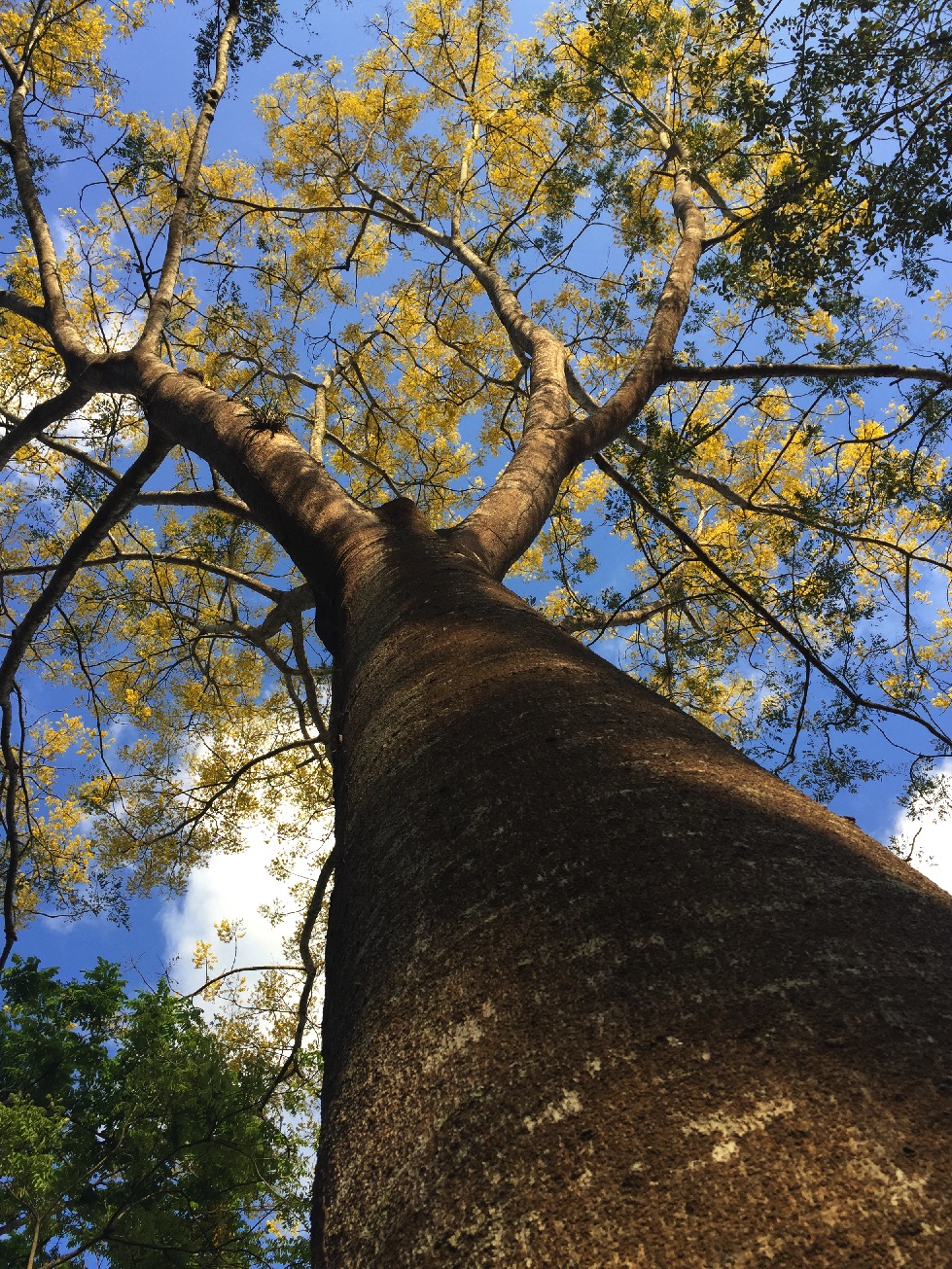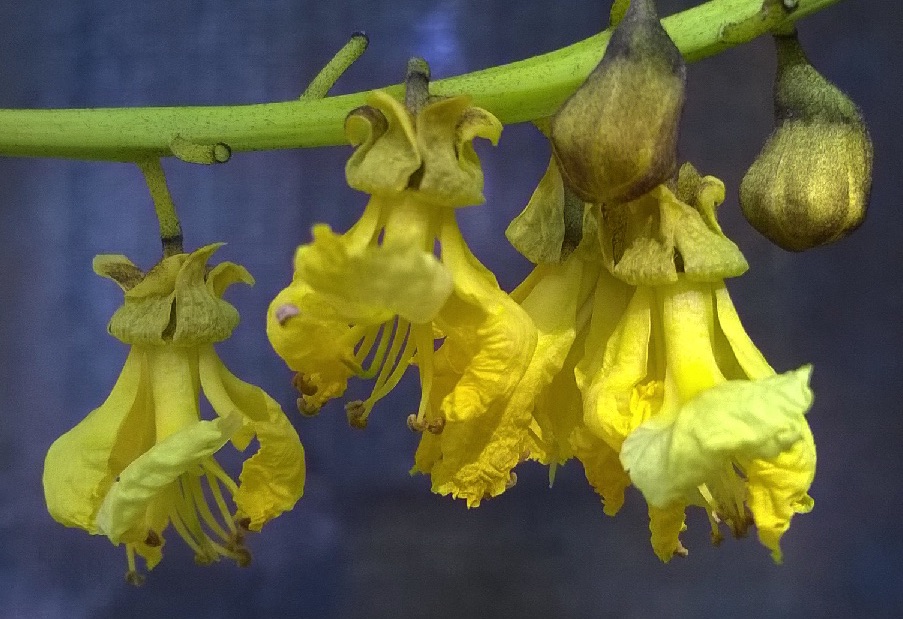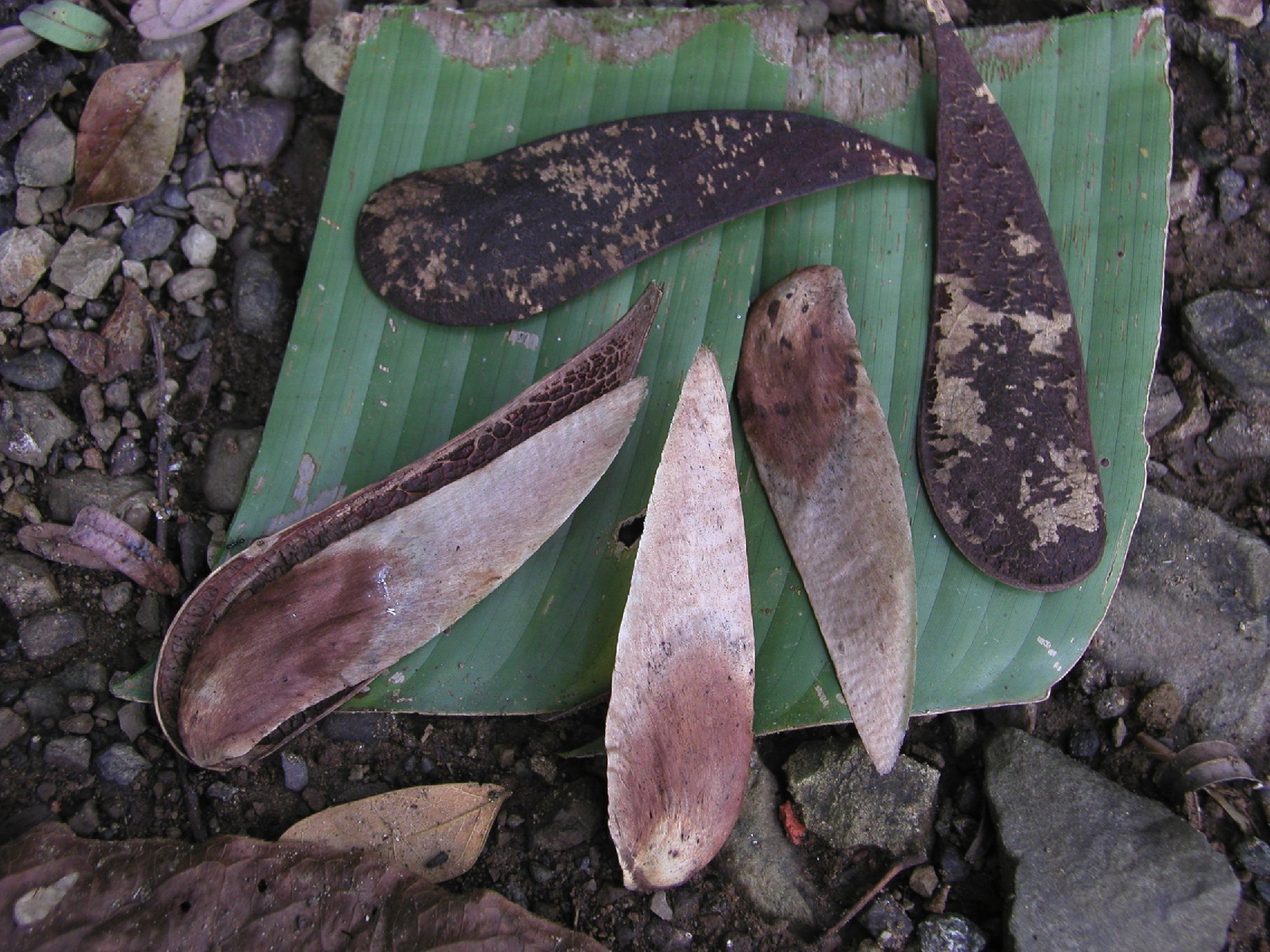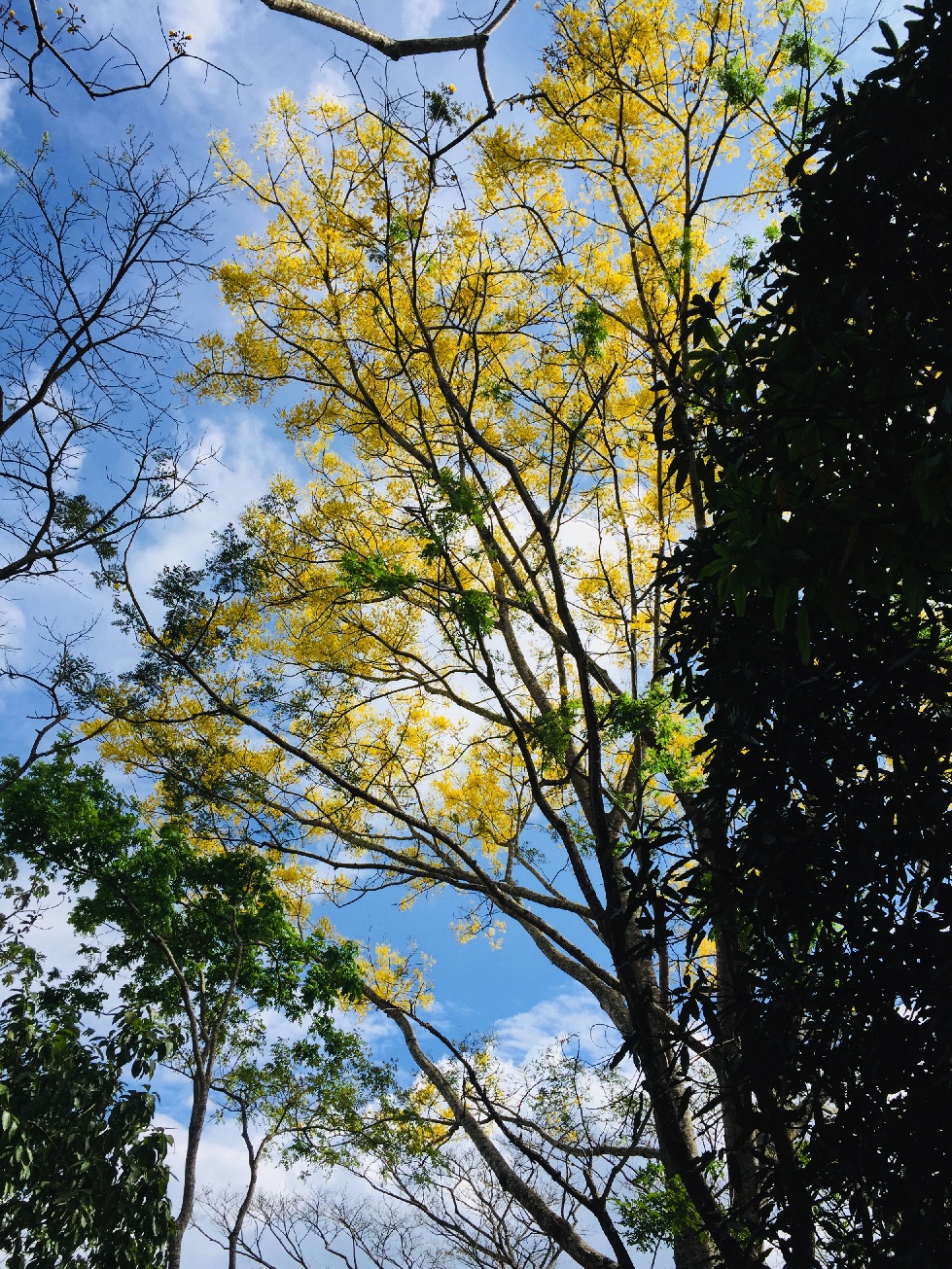Schizolobium parahyba (Vell.) S.F.Blake
Caesalpiniaceae
Gallinazo
Occasional to common canopy tree (25)m whose cylindrical, smooth-barked bole and long, lanky limbs make it stand out from other trees in the forest. Even more so in late December, when the open Gallinazo crown turns from green to brilliant yellow as flowering takes place.
Description: Gallinazo trees have straight, very cylindrical, columnar trunks that support long, upwardly-angled limbs forming an open, airy crown. The bark is smooth and gray, accentuating the geometrical regularity of the tree’s circular cross section and tubular shape. Clustered around the ends of the branches, Gallinazo’s leaves are simple, alternate, and bipinnately compound. Extremely large, each measures some 75cm in length and 40cm across.
Early in the dry season (December), all leaves are shed and soon thereafter large panicles of bright yellow flowers appear high in the open canopy. Each blossom (1.5cm) consists of five cup-shaped sepals, five irregular, ruffled petals, and multiple stamens. Flowering occurs in early January around the Central Valley, but later in March or April closer to the Pacific Coastal lowlands.
Fruits grow quickly from the spent flower panicles. Each is a flat, dehiscent pod (12cm) that contains a single grey, oval seed surrounded by a tan-colored, papery wing. The winds of the mid to late dry season then disperse the seeds, that spin as they descend to the ground (March-April). After having remained largely leafless throughout the dry season, leaves begin to emerge shortly before the rains resume. However, they remain small – in a semi-dormant state – until the rains actually begin in late April or early May.
Similar Species: Few other Pacific slope forest species exhibit the large size, open crown and large, bipinnate leaf structure of S. parahyba. An exception to this is Jacaranda copaia, also known commonly as Gallinazo. This latter tree is found more frequently in the wetter, southern Pacific slope and sports leaflets with serrated edges as opposed to S. Parahyba’s entire leaflets. In addition, J. copaia flowers are blue-violet in color – and very similar to its widely planted -but much smaller – ornamental cousin Jacaranda mimosifolia.
Natural History: Gallinazo flowers are visited by hummingbirds and bees. The winged seeds are dispered by the late, dry-season winds. With its long, largely leafless branches, birds with hanging nests often cho0se this species as a host. In my extended observation of one particular individual, I have noticed that Rose-throated Becards consistently prefer this tree for nesting as opposed to other trees in the area.
Gallinazo is a quintessential secondary forest species. It is a quick-growing pioneer tree that can tolerate the high levels of insolation and warm temperatures typical of open areas better than other types of trees adapted to primary forest habitats. It is also relatively short-lived, with trees senescing and dying after only 30 or 40 years of growth.
Uses: Gallinazo is a notoriously fast-growing tree. An individual I planted achieved a diameter of over a meter and a height of some 20m in just 20 years. For this reason, it is often employed in areas in need of reforestation or used as an ornamental tree in open areas like parks. The freshly cut wood of this species smells strongly and resembles the odor of a chicken coop, hence the common name Gallinazo. Not a high quality wood, it is still employed in construction as in furniture and housing.
Distribution: In Costa Rica, Gallinazo trees are found all along the Pacific coastal slope, and are even present in the cooler Central Valley. It ranges from Central America to southern Brazil.
Images: Tree Trunk Flower Flower2 Flower3 Flower4 Fruit Seed





